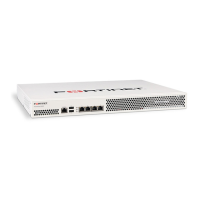Fortinet Technologies Inc. Page 20 FortiVoice 200D/200D-T v2.0 MR1 CLI Reference
Language support
Characters such as ñ, é, symbols, and ideographs are sometimes acceptable input. Support
varies by the nature of the item being configured.
For example, the host name must not contain special characters, and so the web-based
manager and CLI will not accept most symbols and non-ASCII encoded characters as input
when configuring the host name. This means that languages other than English often are not
supported. But dictionary profiles support terms encoded in UTF-8, and therefore support a
number of languages.
It is simplest to use only US-ASCII characters when configuring the FortiVoice unit using the
web-based manager or CLI. Using only ASCII, you do not need to worry about:
• web browser language support
• Telnet and/or SSH client support
• font availability
• compatibility of your input’s encoding with the encoding/language setting of the web UI
• switching input methods when entering a command word such as get in ASCII but a setting
that uses a different encoding
Baud rate
You can change the default baud rate of the local console connection. For more information,
see the FortiVoice Setup and Administration Guide.
Editing the configuration file on an external host
You can edit the FortiVoice configuration on an external host by first backing up the
configuration file to a TFTP server. Then edit the configuration file and restore it to the FortiVoice
unit.
Editing the configuration on an external host can be time-saving if you have many changes to
make, especially if your plain text editor provides advanced features such as batch changes.
To edit the configuration on your computer
1. Use backup to download the configuration file to a TFTP server, such as your management
computer.
"
(to be
interpreted as
part of a string
value, not to
end the string)
\"
\\\
Table 5: Entering special characters
If you choose to configure parts of the FortiVoice unit using non-ASCII characters, verify that
all systems interacting with the FortiVoice unit also support the same encodings. You should
also use the same encoding throughout the configuration if possible in order to avoid needing
to switch the language settings of the web-based manager and your web browser or
Telnet/SSH client while you work.

